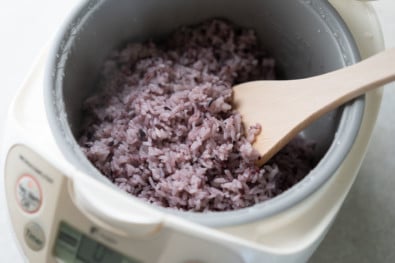
Rice flour and glutinous rice flour are often mistaken for each other by many people. It could be due to similarities in the names of the ingredients, leading to an incorrect assumption about the ingredients. We’ll go over each type of clour, how they’re used in cooking, and when each can be substituted when you’re running low. Also, I’m sharing some of my favorite recipes from this blog using these flours to help you get acquainted with rice flour and glutinous rice flour.
What is rice flour?
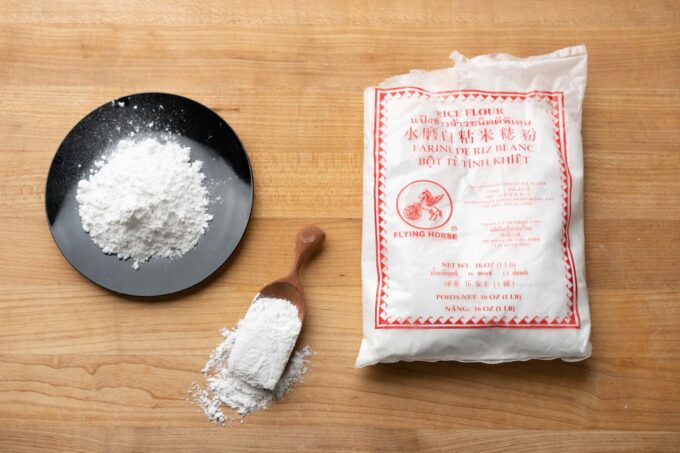
Rice flour is produced by milling long or medium grain rice. It is frequently used in Asian cooking due to its thickening properties and ability to add chewy and stretchy textures to various dishes. In addition, rice flour does not contain gluten, making it soft and elastic.
There are two types of rice flour, brown and rice. Brown rice flour is milled from whole grain rice. Meanwhile, white rice flour is made from ground white rice that contains no bran. Brown rice flour has a nutty, slightly sweet flavor, whereas white rice flour is flavorless.
Common rice flour uses
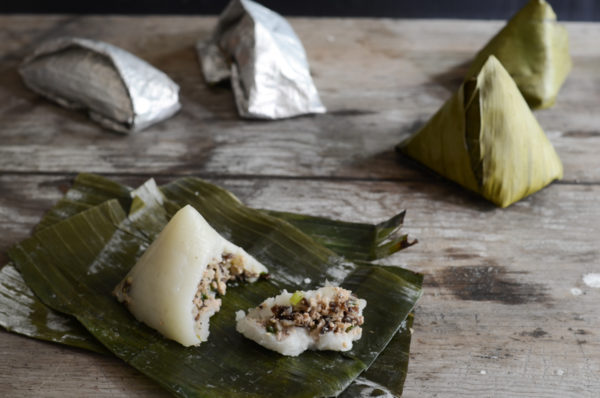
Rice flour is commonly used in Asian recipes to make rice cakes, noodles, pancakes, rice crepes, pastries, and many other dishes. Because of its flavor, brown rice flour is an excellent choice for baking sweets like cookies and cakes. It’s also a good gluten-free option for baked goods because it helps balance out the density. Brown rice flour can also be used as a thickener for soups and stews.

Meanwhile, white rice flour is ideal for making light batters. Since it has no flavor, it is best used to make tempura and noodles as it won’t affect the dish’s flavor. Popular rice flour recipes include bánh gio (Vietnamese rice and pork dumplings), bánh kẹp lá dứa (pandan waffle), and takoyaki (Japanese octopus balls).
Substitutes for rice flour
While brown and white rice flour can be used interchangeably in most recipes, white rice flour is far more prevalent and is what most recipes call for. However, there are numerous excellent substitutes for white or brown rice flour if you find yourself in the middle of cooking and require rice flour.
Below are the most common substitutes for rice flour:
Cornstarch – substitute in equal amounts for baking and frying. Make a “slurry” with water or another cold or room-temperature liquid to use as a thickening agent.
Potato starch – to thicken liquids, use it in the same way you would rice flour, but be careful not to overcook it. Potato starch breaks down and loses its thickening properties while cooking for long periods.
Tapioca starch – use it as you would rice flour. Just keep in mind that tapioca starch has a slight sweetness to it.
All-purpose flour – use it the same way as rice flour in cooking and baking, but don’t use it if gluten isn’t an option. Before using flour as a thickening agent, make sure it has been cooked with some fat and cook it longer in soups or sauces to avoid getting an unpleasant taste and grainy texture.
Wheat flour – similar to all-purpose flour, use wheat flour as you would rice flour for cooking and baking but skip it if gluten is an issue.
What is glutinous rice flour?
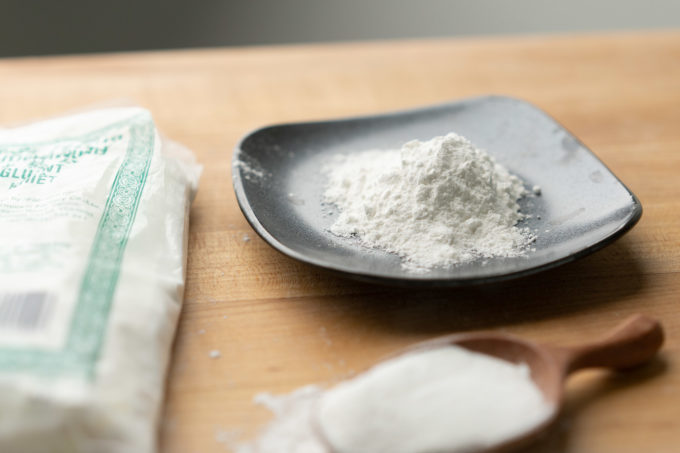
Milling dehydrated long and short-grained rice produces glutinous rice flour, also known as sweet rice flour. Many people believe it contains gluten, but it does not. It’s also not sweet, but rather flavorless, similar to rice flour. Finally, it has some stretch and a sticky, chewy texture.
Many sweet rice flour varieties can be found in Asian cuisines, such as mochigome, chapssal, and malagkit. Mochiko and shiratamako are sweet rice flours made from cooked mochigome that are commonly found in Asian grocery stores.
What is glutinous rice flour used for
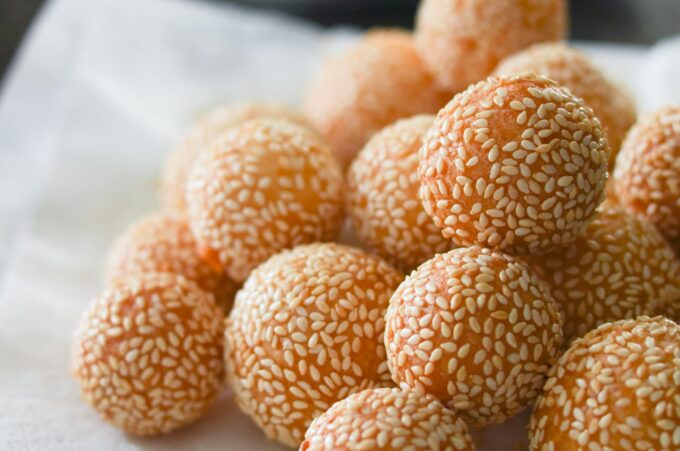
Glutinous rice flour is frequently used in Asian cuisine, particularly in desserts. Because of its chewy texture, it is used to make boba pearls and mochi. When it comes to baking, it is used more like a starch, allowing baked foods to retain moisture. Mochi donuts, ginataan bilo-bilo (rice balls, sweet potato, and coconut dessert), and sesame balls are among popular recipes that use glutinous rice flour.

Sweet rice flour is also used to make savory dishes such as chewy noodles and dumplings. It can also be used to prepare batter for deep frying, but make sure to use sweet rice flour made from long-grain rice because it produces a crispier surface when deep-fried. Furthermore, like rice flour, it can be used as a thickening ingredient in sauces.
Substitutes for glutinous rice flour
Rice flour is the best glutinous rice flour alternative. Furthermore, most rice flour substitutes, such as potato starch, cornstarch, and tapioca starch, will also serve as sweet rice flour substitutes. If you want to use these ingredients as alternatives, use the guide above. Otherwise, you can use the options listed below.
Arrowroot flour/powder – can be used in the same way that glutinous rice flour is used in baking and cooking. It is a flavorless gluten-free ingredient.
Sorghum flour – can be used as a direct substitute for sweet rice flour but is best used for baking.
Almond flour – can be used as a substitute, but it is best used when baking due to its unique flavor. To substitute glutinous rice flour, use 1 1/2 cup of almond flour instead of glutinous rice flour.
Does glutinous rice flour contain gluten?
Despite the name, glutinous rice flour is gluten-free. The term “glutinous” refers to the rice flour’s sticky and gluey consistency when cooked, not to its gluten content. Thus, the name is a little deceptive. In contrast, gluten is a protein that is found in wheat products.
Gluten is vital in bread-making. It is the magical net that holds bread together, catching gas bubbles during fermentation and giving it its distinctive texture. While bread has many of the same ingredients as baked goods like cookies and cakes, its texture is distinct as gluten makes bread light and chewy.
Sweet rice flour vs glutinous rice flour
The terms glutinous rice flour and sweet rice flour can be used interchangeably. Japan, China, and South Korea use the term sweet rice flour, while Southeast Asia uses glutinous rice flour. It’s essentially the same thing. The same type of rice, glutinous rice, sometimes referred to as sticky rice, is used in its production.
How to make glutinous rice flour
Long or short-grain glutinous rice kernels are ground into flour and used to make glutinous rice flour. In Asia, glutinous rice flour is made from short-grained Asian sticky rice. This variety of rice is very prevalent throughout Asia.




